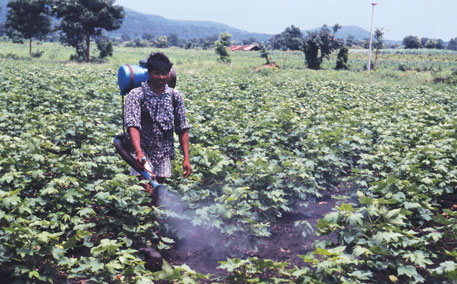Article and Image Courtesy : Down to Earth
Author : Latha Jishnu

Farmers get confused with the dozens of brands of seeds and pesticide that flood the market every year
As vast tracts of cotton fields in Andhra Pradesh and Maharashtra turn into a suicide belt for farmers, there is increasing worry that the dizzying speed of technological change, both in seeds and pesticides, is leading to a critical problem for Indian farmers. Ever since GM or Bt cotton made its debut in 2002, farmers have been on a technology treadmill that is robbing them of their traditional agricultural wisdom that had earlier stood them in good stead. And scientists and academic researchers are warning that this is at the heart of the problem plaguing cotton cultivators, specially in rain-fed areas of the country where farmers have been trapped in a spiral of increasingly high input costs, although the success of the crop is dependent on the vagaries of the monsoon.
According to the Raitu Swarajya Vedika, a collective of 40 farmers’ organisations, there have been 90 suicides in six districts of Andhra in the last month alone. There is even more dismal news from the Vidarbha Jan Andolan Samiti, which spearheads cotton growers’ cause in this arid region of Maharashtra: 671 suicides in the current year. In both states, the area under cotton has risen dramatically.
To be sure, it is the failure of rains that has led to the failure of the cotton crop and the resulting suicides. But, says Glenn Davis Stone, professor of anthropology and environmental studies at Washington University, who has been studying farmers in Warangal district since 2000, GM or Bt cotton has been exacerbating a key problem underlying the suicides: technology treadmills.
What exactly is a technology treadmill? A pesticide treadmill occurs when pests like weeds and bugs evolve to resist the poisons designed to destroy them, forcing farmers to apply ever-higher doses or resort to novel poisons. Similarly, seeds are changed with equal rapidity when it is found that yields tend to taper off. For instance, there are over 800 Bt hybrids in the market developed from four gene constructs, a bewildering array for farmers to choose from.